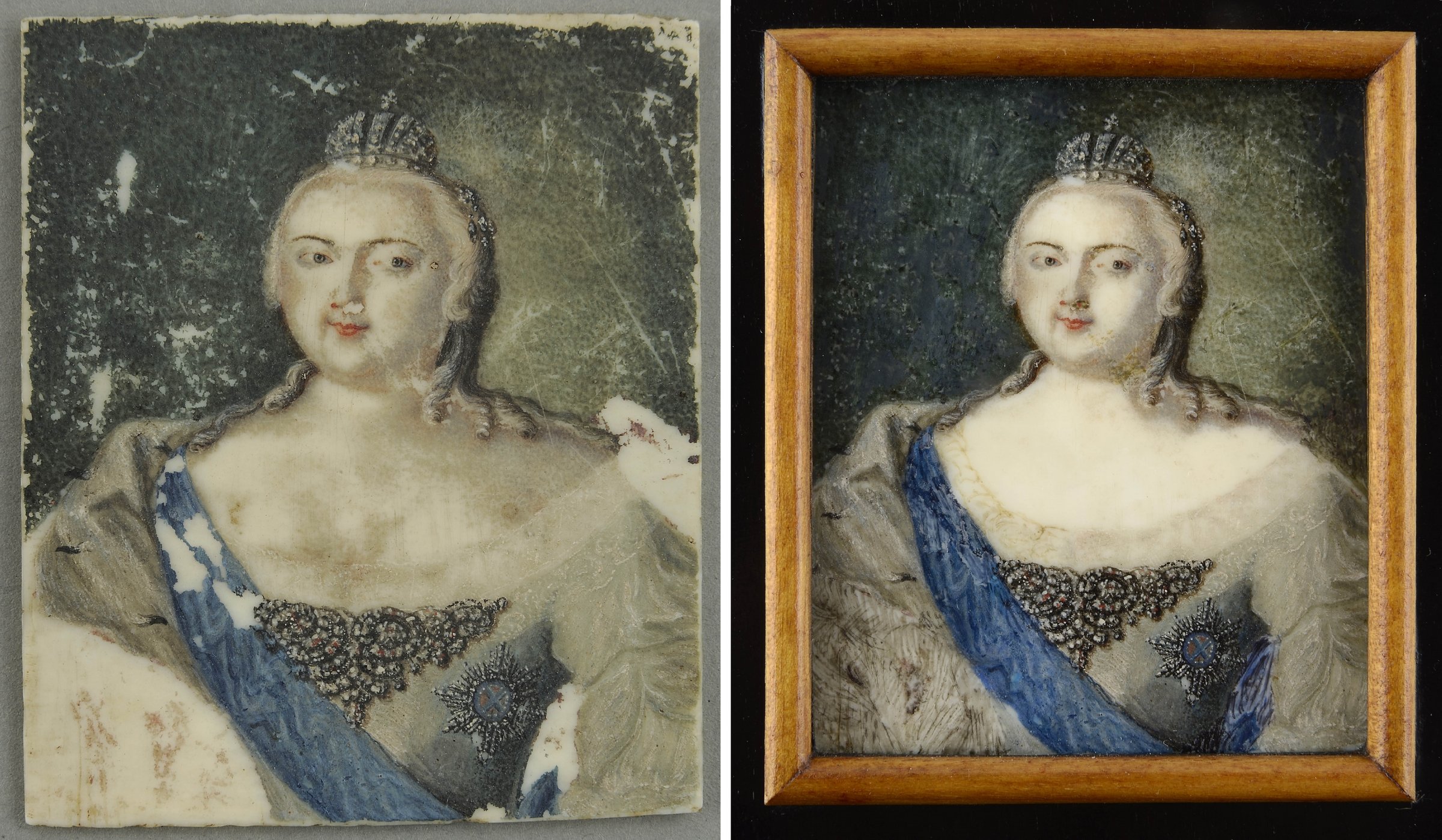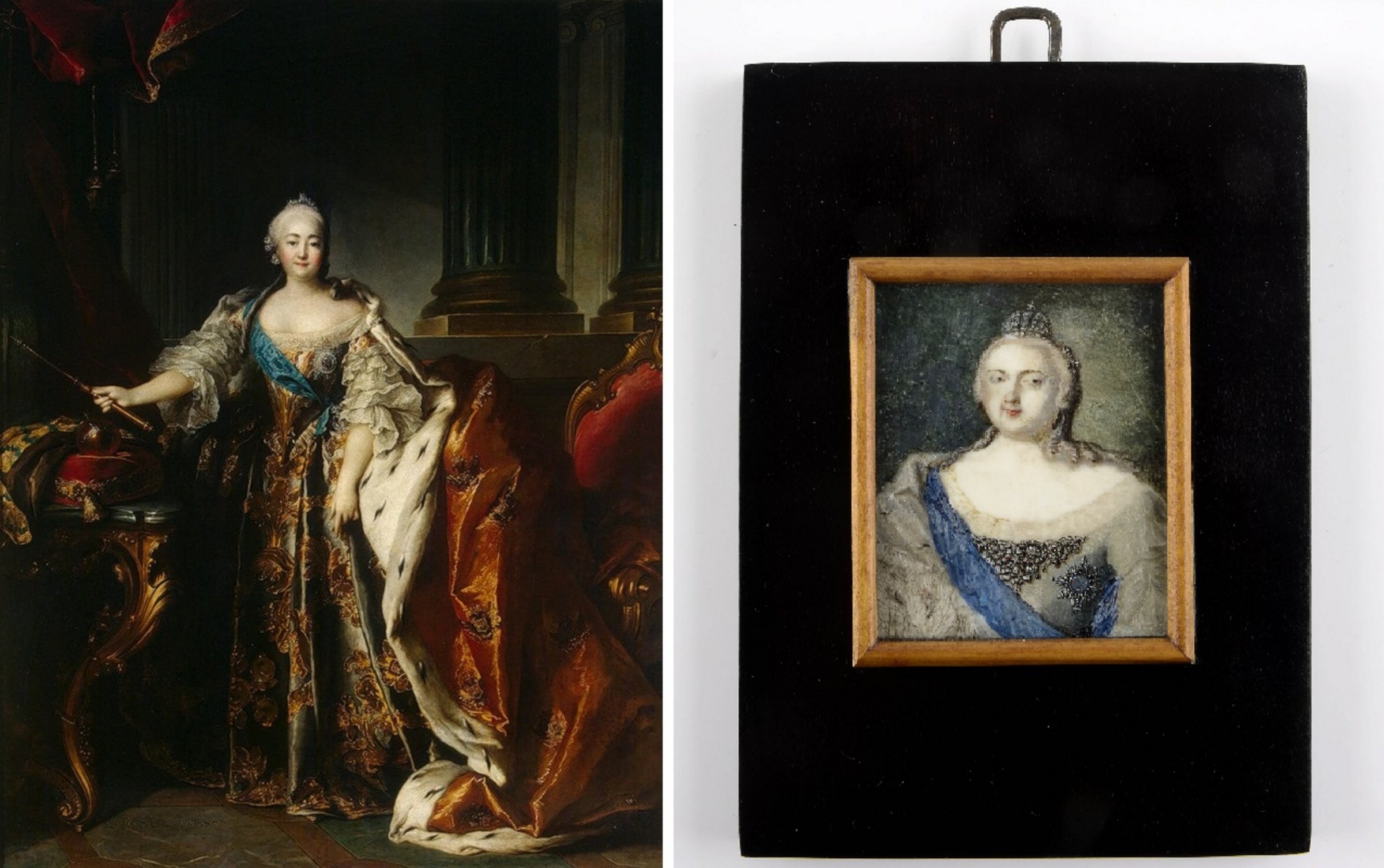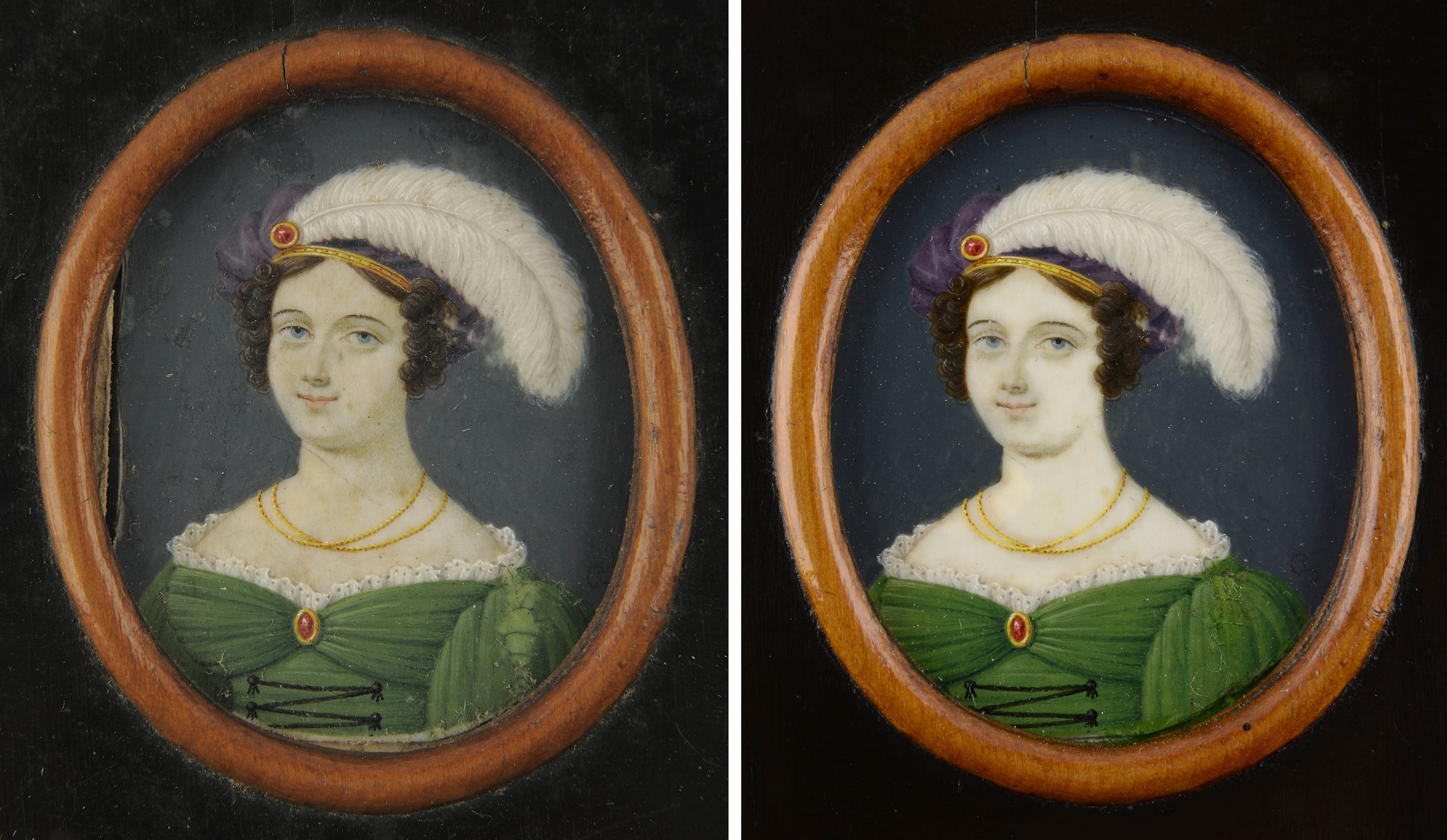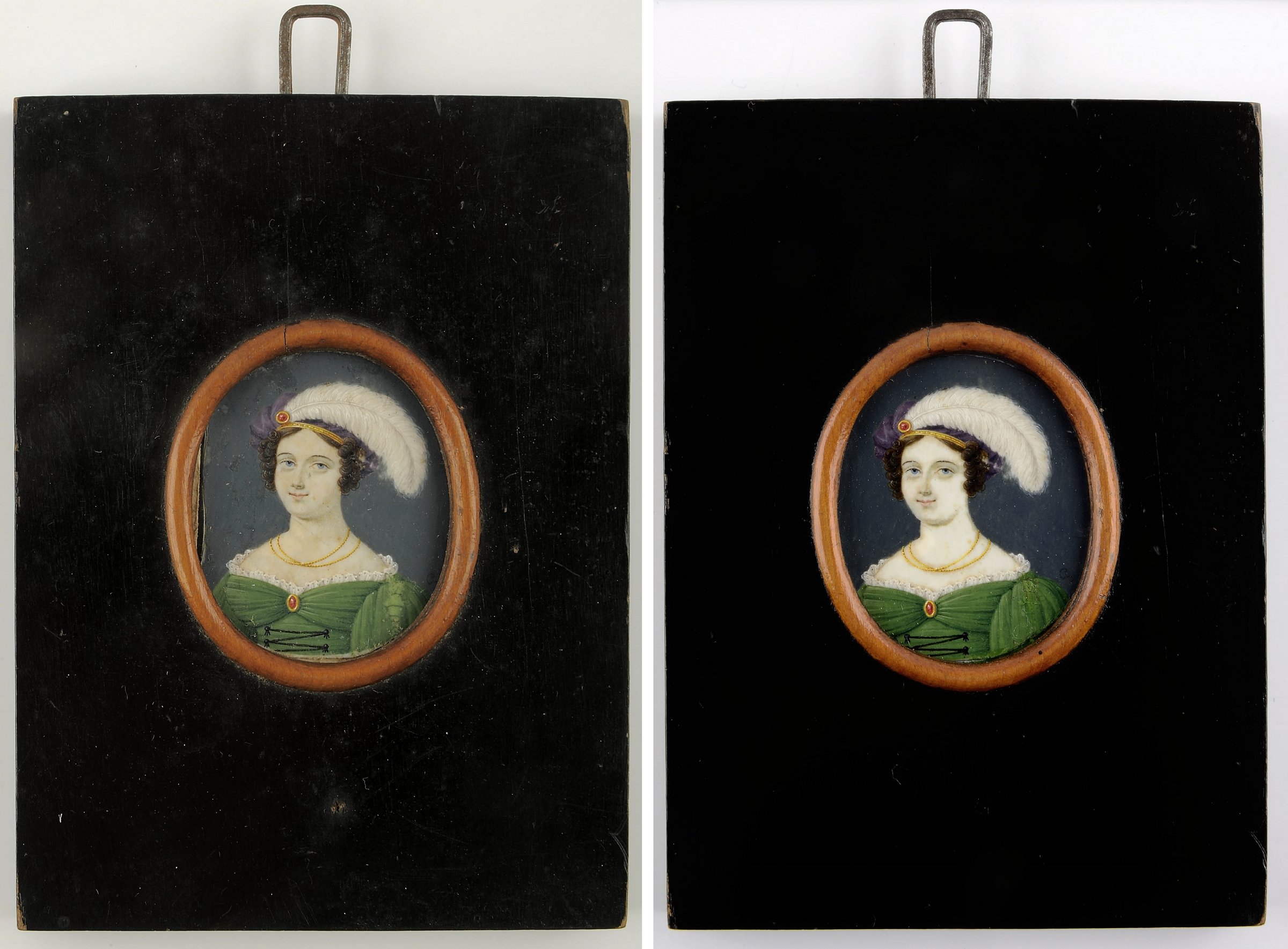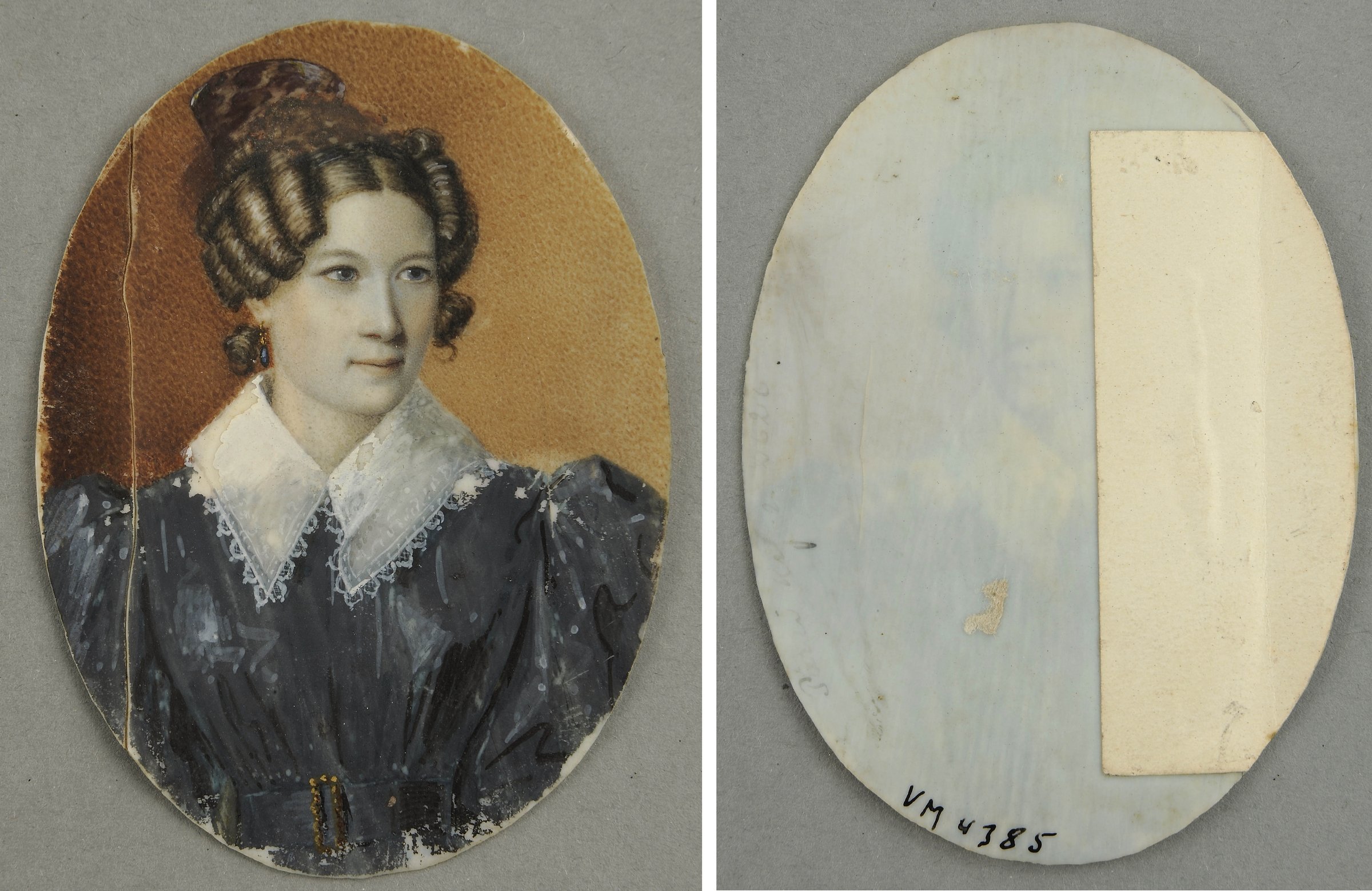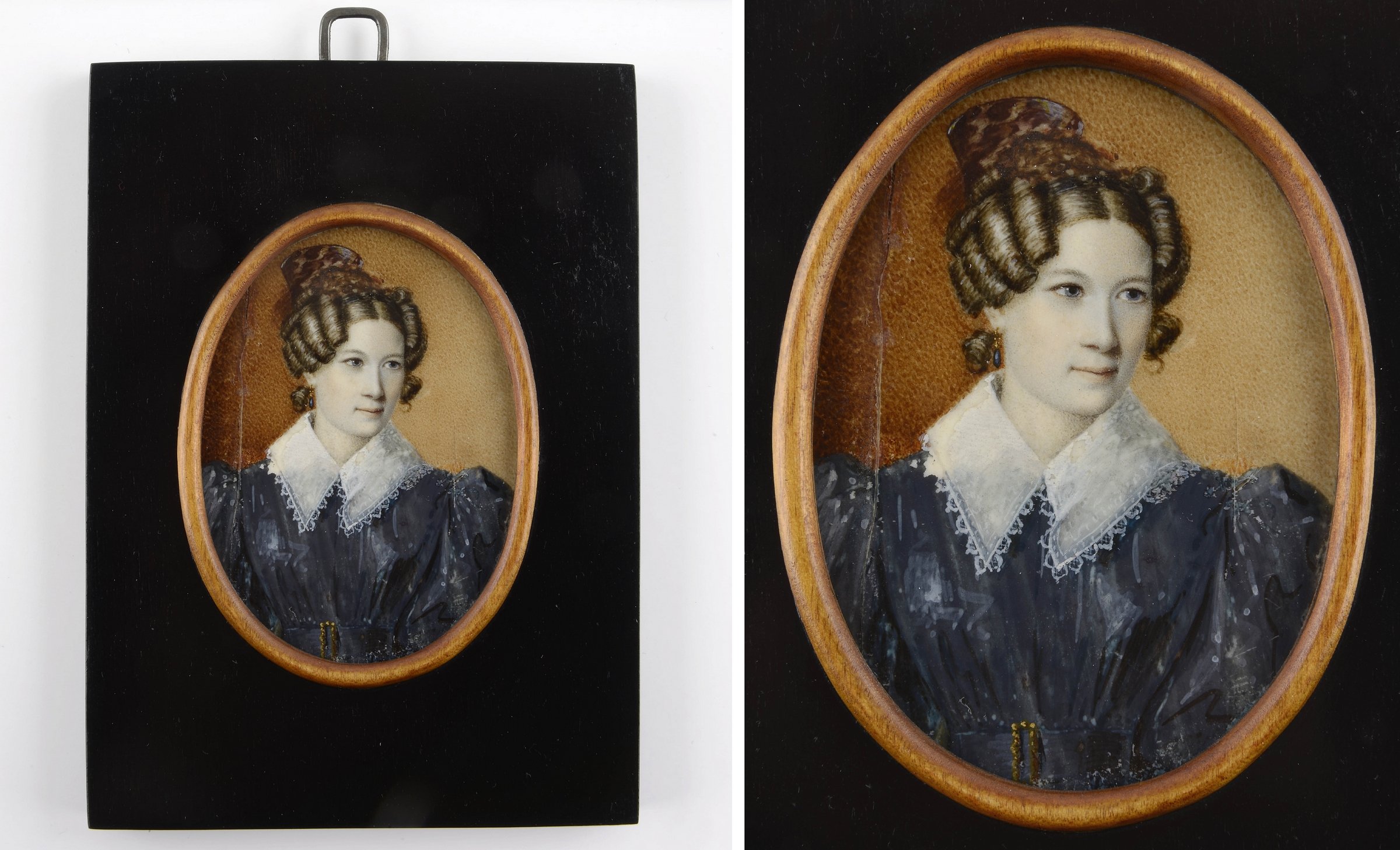MINIATURES – A SMALL PAINTING AND A GREAT CHALLENGE
Autor:
Viljar Vissel, Marika Mängel
Year:
Anno 2015
Category:
Conservation
Miniatures are small and finely finished paintings, above all they are portraits. This kind of image-saving art was dominating before photography was invented.
It was a wide-spread custom to exchange miniatures that were usually displayed together with family portraits. It was customary to have one state-approved full-dress portrait of every ruling emperor copied, as it was a pleasant duty and a privilege of any self-respecting citizen to own one and display it in his home. This approved portrait was a model for many copies in various techniques and sizes, among them also miniatures.
The Viljandi Museum has got a charming trio of miniatures. Unfortunately, information about them is scarce. All three were donated to the museum on 8 March 1941 by engineer Friedrich Werncke. The authors of the paintings have remained unknown but the sitters are certainly known.
The best known among them is Empress Jelizaveta Petrovna (1709–1762) in full dress. The model for this miniature was a state portrait of the empress painted in 1758 by Jean Louis Tocqué.
Sara Magdalena Paetzen's (neé von Taube, born in Riga on 23 February 1757, died in Estonia on 8 March 1782) portrait is an expressive example of a miniature painted in naivist style. The young woman in a beautiful empire-style dress and copious jewelry might have been painted for the purpose of introducing her to the prospective spouse. It was just the original frame of Sara Magdalena Paetzen's portrait that inspired the conservator to design and make the frames for the other two miniatures.
The third miniature shows Sophie Paetsen, neé Bowat, born in Riga in the second half of the 18th century. The lady in a classical Biedermeier style dress is wearing a stylish contemporary hairdo that was fondly called 'cats, rats and mice'. The bone plate of the miniature was broken in a scope of 0.5 cm on its left edge and supported with paper. This kind of damages are frequent when miniatures painted on thin bone base are stored frameless.
All the three miniatures have been painted on bone in gouache. Their surface was dirty. The losses of paint occurred in all three but they were the worst in the portrait of Jelizaveta Petrovna. The surface of the miniatures was gently cleansed with a damp tampon and then the losses were toned in water-colours and covered with a protective lacquer. After varnishing the miniatures were framed.
The miniature paintings were conserved at the Conservation and Digitalisation Centre Kanut in the spring of 2015. Conservators were Marika Mängel (painting) and Viljar Talimaa (woodwork).
REFERENCES:
Keisrinna Jelizaveta Petrovna paraadrõivastuses. Jean Louis Tocqué, 1758. https://commons.wikimedia.org/wiki/File:Elizabeth_of_Russia_by_Louis_Tocque.jpeg
Konserveerimistööde kaart: EK -2013-180-C-20; EK-2013-181-C-21; EK-2013-182-C-22

